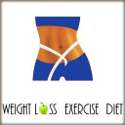-
Diet Tips from Dr. Melina: “Energy Density of Food”
Monday, April 22nd, 2024by Melina Jampolis, M.D., Physician Nutrition Specialist
What if I told you that you could feel full eating fewer calories? Would you be interested? I thought so!
In order to do that you need to understand the concept of “energy density.” Energy density of food basically relates to its water, fiber and fat content.
Let me show you what I’m talking about. Look at the three plates of food in the video below. Each of them, believe it or not, has about the same number of calories. Shocking, isn’t it?
When talking about energy density, the basic idea is that fruits and vegetables have higher water content, so that per any given volume they have fewer calories.
Medium energy density foods like beans and low-fat protein have an average number of calories per volume, and high-fat foods and high-sugar foods, dry salty snacks, and processed foods generally have a lot of calories in a small amount of volume.
Putting Energy Density to Use in Your Diet
So how can you put energy density to use in your diet? First of all, start most meals with soup or salad. Both salads (without too much dressing or high fat toppings) and water-based or broth-based soup contain mainly water so they have a low energy density and will fill you up.
By eating a low energy density appetizer, you will feel more satisfied by the time you get to the higher energy density foods.
Next, when it comes to fruit I would prefer that you eat the whole fruit and skip the dried fruit and juices, which don’t have a lot of fiber (in the case of juice) or a lot of water (in the case of dried fruit). Both of these foods tend to be higher in energy density as a result.
Add Vegetables to Anything You Can
Last but not least – and this is the most exciting part – is to add vegetables to anything you can. So, for example, if I were to take a can of chili (which in itself is 500 calories) and add a can of tomatoes (which is only about 80 calories), then combine the two in a bowl and serve myself half, I would be cutting my calories almost in half.
Adding pureed fruit to baked goods in place of part or all of the butter or oil and substituting low fat or free dairy for cream in sauces can also help lower the calorie density of your diet without cutting portions.
Remember that research shows that we eat with our eyes, not with our stomachs. Use these concepts of energy density in your regular diet and you’ll be able to eat more and lose more!
As a diet doctor, my job is to work with patients just like you who are struggling to lose weight in the real world. My mission is to help my clients design the best possible diet for their particular lifestyle. I hope you find these diet tips helpful!
(published September 27, 2012)
 Dr. Melina Jampolis is a board certified physician nutrition specialist, the former host of Fit TV’s Diet Doctor, and the author of The Busy Person’s Guide to Permanent Weight Loss and The Calendar Diet. Specializing exclusively in nutrition for weight loss, disease prevention and treatment, Dr. Melina teaches a balanced and sustainable lifestyle-based eating and exercise program and has helped thousands of clients improve their health and well-being. She has a small private practice in Los Angeles and San Francisco.
Dr. Melina Jampolis is a board certified physician nutrition specialist, the former host of Fit TV’s Diet Doctor, and the author of The Busy Person’s Guide to Permanent Weight Loss and The Calendar Diet. Specializing exclusively in nutrition for weight loss, disease prevention and treatment, Dr. Melina teaches a balanced and sustainable lifestyle-based eating and exercise program and has helped thousands of clients improve their health and well-being. She has a small private practice in Los Angeles and San Francisco.


